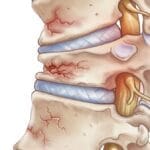Most people are aware of the many benefits of exercise, such as enhancing muscle strength and endurance, reducing the risk of heart disease and stroke, and preventing obesity. However, the importance of regular physical activity in building and maintaining healthy bones is often overlooked. Inactivity can lead to a loss of bone density, which is crucial to understand and address.
The Impact of Aging and Osteoporosis
As we age, our bones can become weak and fragile, a condition known as osteoporosis. This bone-thinning disease often occurs in women after menopause and in older men. Osteoporosis significantly increases the risk of fractures, which can severely limit mobility and independence. Additionally, aging leads to muscle loss, or sarcopenia, contributing to frailty and a higher likelihood of falls and fractures.
How Exercise Benefits Bone Health
Exercise strengthens bones similarly to how it builds muscle. Regular physical activity is vital for developing strong bones in youth and maintaining bone strength in adulthood. Since bone is living tissue, it remodels itself in response to the stress and strain placed upon it. Regular exercise stimulates bone formation and increases bone density. Good nutrition, including adequate calcium and Vitamin D intake, is also essential for bone health.
Another significant benefit of exercise is improved balance and coordination, which is especially crucial as we age to prevent falls and related injuries.
Types of Exercises for Bone Strength
Weight-Bearing Exercises: These activities involve movement against gravity while on your feet, such as:
- Brisk walking and hiking
- Jogging or running
- Dancing
- Jumping rope
- Tennis, badminton, and other racquet sports
- Team sports like basketball, soccer, and volleyball
- Stair climbing
Higher impact activities provide more bone-strengthening benefits, though individuals with osteoporosis or frailty should consult a doctor before engaging in high-impact exercises.
Strength-Training Exercises: These exercises involve resistance to build muscle mass and bone strength, such as:
- Using weight machines or free weights
- Bodyweight exercises like push-ups
- Resistance band exercises
A general guideline is to engage in strength training for each major muscle group at least twice a week, with rest days in between sessions.
Other Forms of Exercise: Non-impact exercises, like yoga and tai chi, enhance flexibility and balance, while non-weight-bearing exercises, such as swimming and cycling, are excellent for cardiovascular health but do not significantly increase bone density.
Starting a Bone Health Fitness Program
An effective bone health fitness program includes 30 minutes of weight-bearing activity at least four days a week. Choose activities you enjoy to stay motivated, and remember that exercise can be broken into shorter intervals throughout the day. Incorporating flexibility and balance training can further reduce the risk of falls and injuries.
Consult your doctor or a physical therapist to tailor an exercise program to your needs, especially if you have conditions like severe osteoporosis. Avoid activities that could exacerbate bone compression or involve high-risk movements.
Bone Health Across Different Life Stages
Adolescents and Young Adults: Building strong bones begins in childhood, with peak bone mass being reached in late twenties. Weight-bearing exercises during the teenage years are crucial for developing maximum bone strength.
Adults: In adulthood, exercise maintains bone density and prevents bone loss. Good nutrition and possibly hormonal supplementation for some individuals can help maintain bone health.
Elderly Adults: For older adults, preventing falls is paramount. Balance training and exercises like tai chi can reduce fall risk and subsequent fractures.
Conclusion
While exercise plays a crucial role in building and maintaining bone health, it is only one part of a comprehensive approach to preventing bone loss and fractures. Understanding individual risk factors, maintaining a balanced diet rich in calcium and Vitamin D, and leading a healthy lifestyle are all essential for lifelong bone healt






